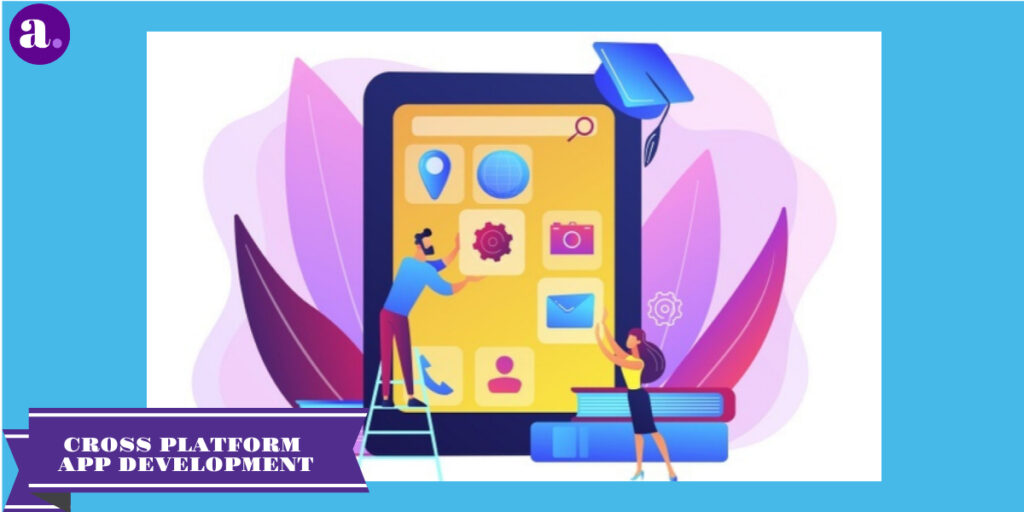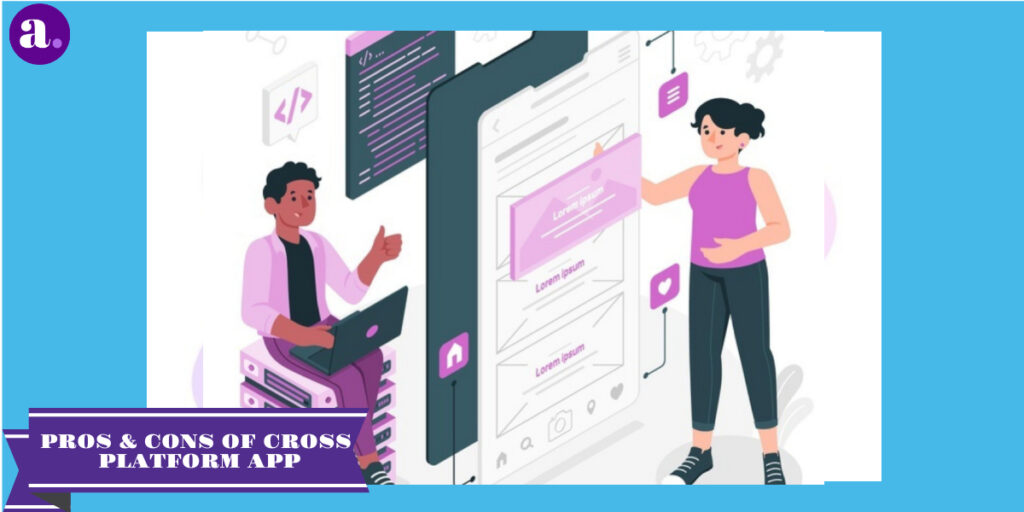Cross-platform app development is the term that we get to hear a lot these days. Time has passed since the computer was the undisputed king of the digital universe. Tablets, mobiles, and even smart TVs have become our main gateways to the digital world.

However, in such different environments, it is important to provide users with similar experiences. That allows for seamless switching from one screen to another. To meet this need, cross-platform app development has emerged.
In fact, the demand for professionals who know cross-platform app development has exploded, as more and more companies want to offer their products and services through them.
Table of Contents
What Is Cross-Platform App Development?
Cross-platform app development is the process by which an application is created in a programming language that facilitates its export and visualization on any type of device. As they are programmed in an appropriate code for the different operating systems, these applications only need minimal changes to fully adapt to any device, be it a mobile, computer, tablet, or smart TV.
What Makes Cross-Platform Application Development Different?
There are different ways to develop applications. The native applications, for example, are developed independently for each operating system according to its own programming language. Taking into account the characteristics and features of the platform where they will be installed.
Although native applications have good performance and a high level of customization. Cross-platform app development is gaining ground because it saves companies time, energy, and resources since it is not necessary to program different apps.
Cross-platform application development is also an interesting option compared to native apps. Although these work in all operating systems and terminals with web browsers that support them, they do not adapt so well to the device’s hardware.
The difference between web and multiplatform applications is that they are not downloaded. But you access them through a URL and the browser as if they were a web page so that the data is stored in the cloud.
Web apps also tend to be more trending just like cross-platform apps in design and functionality. For this reason, companies that need a more complex design or demand a higher level of customization tend to bet on cross-platform app development or PWA.
Pros & Cons Of Cross Platform App Development
Whenever we talk about developing a mobile application, like everything else, it has its advantages and disadvantages. Depending on the objectives to be achieved, choosing one app or another may determine the final result.

Now we will discuss some of the advantages and disadvantages of cross-platform applications that can answer possible questions.
Advantages Of Cross-Platform Apps
- As we have mentioned before. The main advantage is that they are compatible with all types of devices and any operating system. It does not matter whether it is viewed on a smartphone, tablet, or pc or whether it is for Android or iOS systems. Cross-platform applications adapt to everything without the need to create different apps.
- By being developed under the same language, saving time, costs, and resources is a reality. Despite this, its quality and performance do not diminish. Cross-platform apps have a great performance that has nothing to envy native applications.
- Cross-platform apps do not need to use the browser since they can be downloaded and thus create direct access from the device. In addition, these apps have complete integration with both the hardware and the software of each device.
- Using such popular programming languages as HTML5 or tools like React Native makes finding professionals with knowledge of these codes harder. Since PWA are also cross-platform apps, APPSTYLO helps you create such apps without having any coding knowledge.
- The Mobile First philosophy is one of the keys in cross-platform app development. The fact that it can be adapted to all types of devices. Especially mobile phones make them a much more attractive tool for customers. In the mobile era in which we live, that any type of content can be viewed from a phone is essential.
Disadvantages Of Cross-Platform Apps
Although as we are seeing, these types of apps have numerous benefits. They also have some disadvantages not everything is going to be perfect right? But we can already predict that these small aspects will not change all the good things that we have told you about them and surely you will continue to think about how good they can be for your next app idea.
- Despite the fact that cross-platform apps adapt to all devices, tests, and tests can never be lacking. Therefore, you also have to check that the app is displayed correctly. In addition, when any changes are made, you have to double-check that everything works fine on the other devices.
- Although the applications are cross-platform, you have to generate an APK (Android) and IPA (iOS) for them to work well, so the SDKs for each platform will be necessary.
How To Develop Cross-Platform Apps?
Cross-platform app development requires extensive knowledge of several different programming languages. The core benefit of such apps is not having to develop different apps to work on different platforms. The easy and best way here is to use an app builder. You can use the APPSTYLO app creator to build PWA to solve all your problems.
We provide versatile, safe, quality, and intuitive tools that allow automation processes, increasing productivity, and improving the design.
